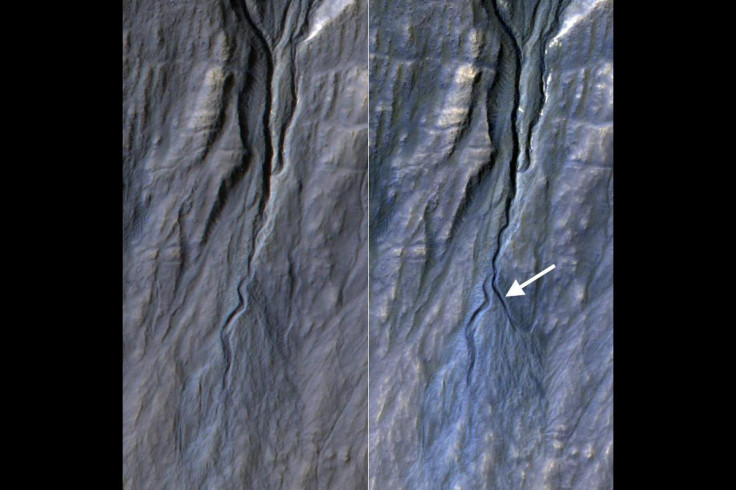NASA Spacecraft Observes More Evidence Of Dry Ice Gullies On Mars

Observations made by NASA’s Mars Reconnaissance Orbiter, or MRO, have helped astronomers determine that gullies on the red planet’s surface are mainly created by frozen carbon dioxide, and not by liquid water as previously thought.
Reports of gullies on Mars’ surface in 2000 suggested the presence of liquid water on the planet, a theory based on the fact that the eroding of liquid water forms gullies on Earth. Although astronomers have found evidence of water vapor and frozen water on Mars, the existence of liquid water on the planet, a necessary ingredient for life to thrive, is yet to be confirmed.
“As recently as five years ago, I thought the gullies on Mars indicated activity of liquid water,” Colin Dundas, a research geologist at the U.S. Geological Survey’s Astrogeology Science Center in Flagstaff, Ariz., and the lead author of a recent study of the phenomenon, said in a statement. “We were able to get many more observations, and as we started to see more activity and pin down the timing of gully formation and change, we saw that the activity occurs in winter.”
As part of their study, astronomers used the High-Resolution Imaging Science Experiment, or HiRise, camera on the MRO to observe Martian gullies at 356 sites on the planet, beginning in 2006. According to the researchers, 38 of the sites showed active formation of gullies, including new channel segments. Further analysis of images helped the researchers determine that the gully formation activity coincided with seasonal freezing of carbon dioxide.
Frozen carbon dioxide, or dry ice, does not naturally exist on Earth, but it is abundant on Mars, where there are carbon-dioxide gas geysers and lines on sand dunes drawn by dry-ice blocks.
“The findings in this latest report suggest all of the fresh-appearing gullies seen on Mars can be attributed to processes currently under way, whereas earlier hypotheses suggested they formed thousands to millions of years ago when climate conditions were possibly conducive to liquid water on Mars,” NASA said in a statement.
© Copyright IBTimes 2024. All rights reserved.












